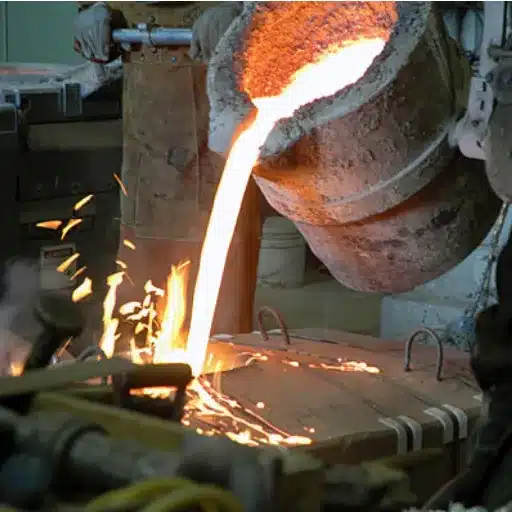Seamless stainless steel pipes are indispensable modern components showing remarkable strength, durability, and versatility. While controlling their unique aspects can be overwhelming, these vital elements are employed in construction, energy, manufacturing, and many other sectors. From the professional in the industry to the curious citizen, this article simplifies the complexities and presents essential insights like the process of manufacturing and the advantages that these pipes offer. So, join us in uncovering the severe facts and insights together that aid one’s comprehension of the components, aiding the audience to make informed choices.
What is a seamless stainless steel pipe?
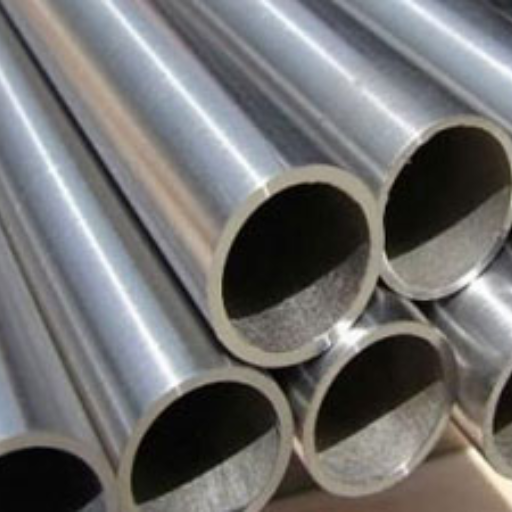
A seamless stainless steel pipe does not have welds or joints, granting it greater strength than a regular pipe. It is made by extruding a solid steel billet into a hollow tube, which helps in retaining the overall strength of the material. This makes seamless pipes extremely strong, pressure resistant, and smooth from the inside. This type of pipe is ideal for use in construction, energy, and transportation industries.
Definition and characteristics of stainless steel seamless pipe
The advantages of stainless steel seamless pipes stem from their unique manufacturing technique. One of the most remarkable benefits lies in their remarkable strength and endurance, withstanding high pressure without cracking or deformation. These pipes are highly suitable for high-stress applications such as the oil and gas industries, chemical processing, and power generation. Furthermore, the pipes’ high resistance to corrosion and oxidation in extreme environments and temperatures is an effect of the chromium content in stainless steel pipes. The quality of seamless pipes has greatly improved with modern advancements in production technology. For instance, new innovations in extrusion as well as the heat treatment processes offer tighter tolerances and better surface finishes, which greatly improve their reliability and efficiency.
Dimensional Specifications and Applications
There is a multitude of grades and sizes tailored for specific industrial needs with stainless steel seamless pipes. Available lengths start from small diameters of 6mm and go up to over 600mm, with wall thicknesses changing accordingly to accommodate pressure levels and flow capacity. ASTM A312/A213 is an example of major standards that deliver constant quality and performance characteristics for these pipes.
Such pipes are used in industries that require greater accuracy and dependability, including the energy sector, which uses seamless stainless steel pipes as boiler tubes, heat exchanger tubes, and refinery pipeline tubes under high-pressure and temperature conditions. Seamless pipes in the pharmaceutical and medical industries allow fluid and gas transport without risk of contamination because they do not contain joints.
How seamless steel pipe is manufactured
The production procedure of seamless steel pipes requires a series of exact specifications for quality and strength. It starts with high-grade steel billets, which are placed in a rotary hearth furnace and heated to about 1200 degrees Celsius. After the billets are heated, they are pierced in a rotary piercing machine, resulting in a hollow shell. This hollow shell then passes through a series of rolling mills like the plug mill or mandrel mill, through which the shell is rolled to the desired thickness and diameter.
These processes employ precision saws and reduction mills where the pipes are cut to size and finished to specifications. The material is cooled for stabilization in a controlled environment, after which the pipes are straightened for uniform edges. The pipes undergo stringent non-destructive testing, ultrasonic inspections, and hydraulic pressure testing to check for compliance with international standards such as ASTM, API, EN, and others.
The use of automated computer systems and atomized cooling technologies has greatly increased efficiency and production precision within modern manufacturing. Presently, seamless steel pipes are produced with diameters ranging from 10 mm to over 400mm with wall thicknesses meeting industrial requirements. The extensive production methods that have been established ensure the pipes can be accurately considered inoperable due to extremely high strength, corrosion resistance, and critical applicability in the oil and gas, construction, and power generation industries.
Advantages of seamless stainless steel over welded pipes
- Superior Strength and Durability
Because of the way they are constructed, seamless pipes completely lack welding, which makes them stronger than welded pipes. Weak points that are likely to fail under too much weight or force are missing due to the welded seam. As a result, these pipes are best used in environments with high pressure, such as oilfield or gas drilling activities that can have pressures beyond 20 thousand psi.
- Enhanced Corrosion Resistance
Seamless stainless steel pipes devoid of welded seams exhibit greater rust resistance, making them suitable for use in chemically aggressive or moist environments. On the other hand, welded pipes tend to suffer from restrained corrosion at the weld line because of some structural or compositional irregularities.
- Greater Dimensional Accuracy
Due to their seamless structure, welded pipes have larger tolerance ranges and better uniformity when compared to the other type, and as such are used for more precise measurements. It is very important for industries requiring great standards of fitting and reliable functioning, like aerospace and precision machineries.
- Suitability for Extreme Conditions
Due to having a single part construction, seamless pipes are better for dealing with severe changes in temperature and high levels of pressure. Power generation and thermal power plants are some of the industries that exploit high-temperature steam, and they rely on seamless stainless steel because it performs exceptionally well.
- Fewer Maintenance Requirements
The robust structure of seamless pipes makes them incur less frequent inspection and maintenance compared to welded pipes that are prone to stress-induced cracks at the weld joints. This leads to lower costs in the long run for industries that depend on uninterrupted operations – in other words, it makes the revenue-capturing more efficient.
- Improved Aesthetic Appeal for Structural Uses
For modern construction works, seamless stainless steel pipes are the best because their lack of weld seams gives them a smooth, homogeneous surface which is ideal for ornamental purposes, making them suitable for use in architecture.
Considering the above-mentioned benefits, smooth stainless steel tubing pipes play an integral role in tough industries, providing dependable and effective services lasting over a long period of time.
How is seamless pipe different from welded pipe?
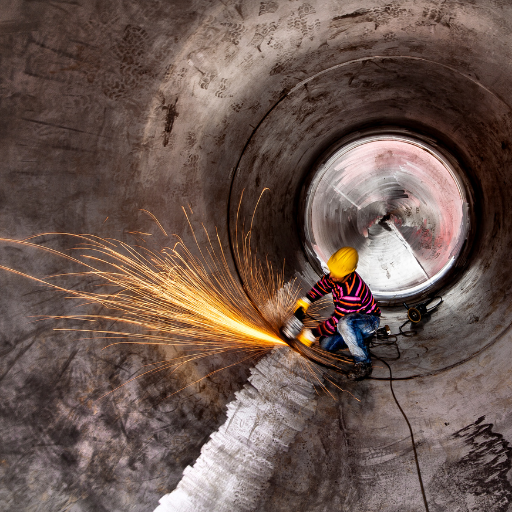
Seamless pipes lack both joints and welds, which makes them far more resilient to internal pressure as well as corrosion when compared to welded pipes. Welded pipes, on the other hand, are manufactured through rolling metal sheets into pipes and then welding them together. This seam, while it may work during the welding process, is far more susceptible to failing under certain stresses. Due to the enhanced durability and reliability seamless pipes offer, they are the most preferred choice. Welded pipes are ideal for low-pressure systems or not-so-critical applications simply because they are more economical.
The process of making seamless and welded pipes
The creation of seamless pipes commences with a solid chunk of steel referred to as a billet. It is subjected to extremely high temperatures before a mandrel is used to pierce the surface and form a hollow tube. This hollow tube shape is then subjected to extensive rolling and shaping so that the required dimensions can be obtained from the component. Pipes that no longer have a welding seam exhibit greater strength and uniformity, and this process is what makes seamless pipes so unique.
With welded pipes, a piece of metal is rolled into a flat sheet or strip, and this is used as the starting point. The rolled sheet is welded at the edges using electric resistance welding (ERW) or submerged arc welding (SAW) methods, and post welding, heat treatment is applied to the pipes which further ensures their strength and structural consistency. Alongside seamless pipes, welded pipes are cheaper to produce, although they are structurally weaker.
New information from the markets shows that the use of seamless pipes is common within the oil and gas, chemicals, and power generation industries, thanks to their ability to endure extremely high temperatures and pressure. Welded pipes are also in common use for construction, water pipelines, and engineering works due to their relatively lower costs. These two types of pipes are, however, in high demand globally because of the rising economic development and industrial growth activity.
Difference between seamless and welded stainless steel
The muscular performance and uniformity of Seamless Stainless Steel pipes make them ideal for extremely high-pressure areas such as oil and gas transportation and power plants. Such pipes are manufactured through extruding a solid steel billet, where it is transformed into a hollow cylindrical shape with no joints or welds. Absence of weld seams guarantees enhanced durability, strength, and resistance to corrosion, which is particularly important in harsh corrosive environments.
Modern welding techniques have improved the quality of welded bent pipes which enables strong and reliable seams. Welded stainless steel pipes are produced using lower quality steel strips or plates, turning them to a cylindrical shape and welding the edges. As such pipes are generally stronger, they are commonly used with lower pressure systems like water pipelines, automobile exhaust, and construction applications. Additionally, as these welded pipes have lower manufacturing complexity, they are more cost-efficient.
In terms of market analysis, seamless stainless steel pipes are leading in sectors that demand high dependability and efficiency, with a CAGR of more than 6% anticipated for the international market. Economically priced welded stainless steel pipes are also expected to grow on a steady scale, especially within developing countries that are seeing growth in infrastructural initiatives. The total consumption of these pipe categories illustrates a highly responsive supply due to the growing manufacturing technology and global infrastructure development.
Applications where seamless tubing excels
Due to their impeccable accuracy, toughness, and ability to withstand extremes, seamless tubes are utilized in highly advanced applications. Some of the major industries and applications where seamless tubing is used are given below:
- Oil and Gas Industry
Seamless tubing is important to drilling operations as well as flowlines and hydraulic systems where high pressure and high temperature are dominant operational conditions.
Example: Used for transporting oil and gas during upstream drilling from sub-surface well depths.
- Aerospace and Aircraft Manufacturing
Since it is light and strong, it is used in high-value applications like hydraulic systems, fuel lines, and structural supports.
Example: Seamless tubing helps in the jet engine’s efficient heat resistance.
- Automotive Industry
Also, it is commonly employed in the production of high-performance fuel injection systems, exhaust systems, and shock absorbers.
Example: Known to be used on race cars because of its ability to withstand very high levels of stress.
- Power Generation
Seamless tubing also forms part of the boilers, heat exchangers, and steam systems at the power plants.
Example: Important in the movement of superheated steam in nuclear and thermal power plants.
- Pharmaceutical and Food Processing
Guarantees cleanliness and corrosion resistance in the passage of liquids and gases within production lines.
Example: Used for clean water delivery in pharmaceutical manufacturing sterile systems.
- Chemical Processing
Deals with corrosive media and high-performance liquids in reactors and processing lines.
Example: Used for secure transfer of acids and other highly reactive substances.
- Construction and Infrastructure
Applied in the construction of skyscrapers and bridges, as well as in strong yet flexible materials used in critical structural components.
Example: Architectural frameworks with both strength and appeal utilize seamless tubes.
- Marine and Offshore Applications
Designed for pipelines and shipbuilding, they are resistant to corrosion and pressure in subsea environments.
Example: Employed in subsea apparatus such as flexible pipelines and risers.
The multifunctional uses of seamless tubing emphasize its importance in industries with stringent needs of dependability, safety and sustainablity.
What are the applications of seamless stainless steel pipes?
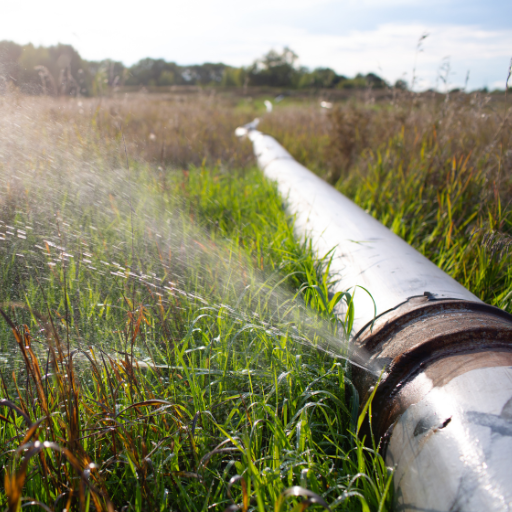
Seamless stainless steel pipes serve a broad range of applications that require high strength and reliable performance in extreme conditions, along with corrosion resistance. Principal applications include:
- Oil and gas industry: Movement of Oil and Gas: Use of high pressure and temperature to transport oil, gas and other fluids.
- Chemical and petrochemical processing: Operating with Corrosive Chemicals and the Requisite High Temperatures.
- Power generation: Tubing in boilers and heat exchangers in power plants.
- Automotive and aerospace sectors: Tubing and Structural Components that require precision.
- Food and beverage industry: Pipelines and valves that process and transport food products need to be hygienic.
The durability of these pipes alongside their functionality and performance in critical and challenging environments makes them extremely valuable.
Industrial applications of seamless pipe
Due to their strength and reliability, seamless pipes are indispensable in a variety of industries. I make use of them for corrosive chemical and elevated temperature processes in chemical plants, as boiler and heat exchanger tubing in power generation, precision automotive and aerospace tubing, and as hygienic piping in food and beverage processing industries. Their excellent durability and performance in harsh conditions makes them a preferred choice.
Use in the oil and gas industries
Their resistance to high pressure, temperature, and corrosive environments seamlessly integrates these pipes into the oil and gas industries as some of their critical components. These pipes are crucial in upstream, midstream, and downstream operations. For instance, in upstream operations, seamless pipes are utilized in drilling rigs, structural well casing, and tubing as they provide the required structural strength for deep drilling under harsh conditions. Seamless pipes are also useful in midstream operations as they serve the purpose of transporting crude oil and natural gas over long distances through pipelines with remarkably reduced leakage.
Higher energy requirements and continuous exploration and production activities have stimulated notable growth in the global oil and gas seamless steel pipe market. Moreover, seamless pipes can be observed showcasing their efficiency in offshore drilling operations as they are used in risers and flowlines, needing high resistance to seawater corrosion and changes in pressure. To conclude, seamless pipes further prove to be essential in modern energy infrastructure since, as it stands, these seamless pipes are crucial in assuring safety and operational effectiveness in energy construction.
Benefits in high-pressure environments
Due to their inherent strength and reliability, seamless pipes are massively sought after in high-pressure applications. Seamless pipes are devoid of weak spots, such as seams or joints, making them extremely pressure resistant when compared to welded pipes. This property is important for industries like oil and gas, which have pipes undergoing extreme pressures both during extraction and transportation. Seamless steel pipes, for example, are ideal for deep-sea drilling and high-temperature applications as they can withstand over 20,000 psi of pressure.
Moreover, seamless pipes have remarkable properties in terms of durability, as well as resistance to cracking or deformation under fluctuating temperature and pressure extremes. This dependability translates to lower maintenance expenses and reduced downtime. Seamless pipes’ uniform wall thickness and structural quality as a result of advanced production processes also strengthen the pipes longevity under harsh operational conditions. The unparalleled performance seamless pipes provide in extreme pressure scenarios makes them fundamental in critical infrastructures around the globe.
Who are the leading pipe suppliers for stainless steel seamless pipe?
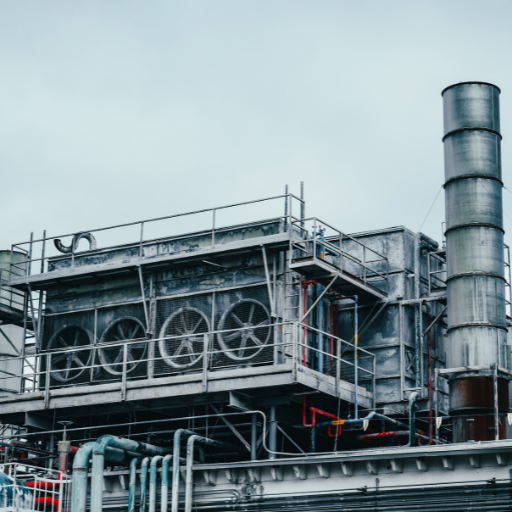
A few companies have emerged as prominent vendors for seamless stainless steel pipes with the requisite quality and standards for multiple sectors like oil and gas, petrochemicals, construction, and others. These include:
1. Vallourec Vallourec is known for its proficiency in engineering and fabrication. The company deals in the industrial production of premium seamless steel tubes and pipes. Vallourec has a strong presence around the globe as it operates on different continents, which helps in the efficient supply of products and ensures quality. 2. Tenaris Tenaris is another important supplier with a reputation for seamless steel products. Its industrial product portfolio includes items required by sectors like energy, automobile, and power. Tenaris also puts a lot of resources into new products and development to make seamless stainless steel pipes stronger and more durable. 3. Sandvik Materials Technology Sandvik Materials Technology is a world leader in the production and distribution of stainless steel and other advanced materials. It is well known for the precision machining of high-performance pipes, like seamless ones. The seamless pipes are used in industries that are tough from corrosion and require high durability, which makes them challenging to serve. 4. Jindal Stainless Jindal Stainless is a well-known manufacturer and supplier of stainless steel, based in India, of seamless pipes and tubes. Being one of the global stainless steel giants, Jindal Stainless has advanced manufacturing facilities and a commitment to sustainability.
Seamless pipes that are of premium quality are manufactured by the Japanese company Nippon Steel Corporation, it being one of the top producers. The company is very advanced and innovative in technology, with their pipes adhering to the strictest quality standards and possessing superb mechanical attributes and dependability.
The firms stand out from their rivals through quality control, wider variety of products, and international supply chain covering all parts of the world, guaranteeing that their stainless steel seamless pipes service the complex and ever-changing requisites of contemporary industries.
Leading Pipe Suppliers for Stainless Steel Seamless Pipe
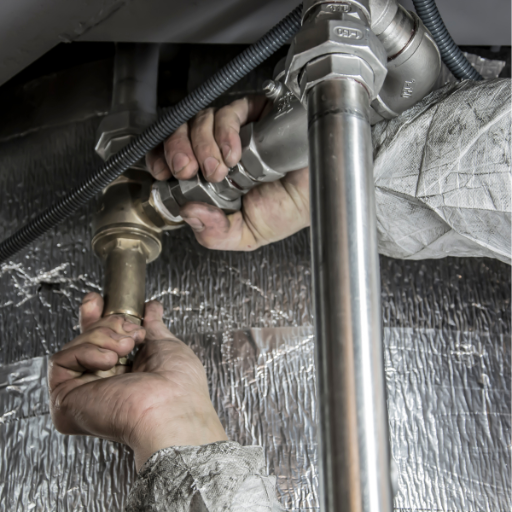
A number of businesses are acknowledged as the foremost providers of seamless stainless steel pipes for their dependable products and experience in the sector.
- Vallourec: Renowned for its seamless stainless steel pipes for the construction and energy sectors.
- Sandvik Materials Technology: An outstanding provider of stainless steel tubing, renowned for its unmatched quality and performance.
- Tenaris: A world-class manufacturer providing seamless pipes for the oil and gas industries with great value addition.
- Tubacex: Stands out for providing the demanding industrial application stainless steel and high alloy seamless pipes.
- ArcelorMittal: A well-known supplier offering seamless pipes that withstand extreme conditions under high stresses and pressures.
The consistency in quality, innovation, and their observance of global standards make these companies trusted across the globe.
Top pipe manufacturing companies
1. Vallourec
Vallourec, a company originally from France, focuses on oil and gas solutions, offering premium tubular products. Vallourec boasts inwards of €3 billion in revenue from recent years, as they are considered one of a kind in pipe manufacturing. Vallourec relies heavily on innovation due to its advanced R&D in different parts of the world, allowing it to create more impenetrable products. Throughout numerous industrial domains, including drill sergeants, power stations, and military purposes, Vallourec’s seamless steel pipes with superior-grade connections rank high in demand due to their exemplary performance under atmospheric pressure, extreme temperatures, and corrosion.
2. Tenaris
From Argentina, Tenaris has proven to be a dominant innovator in seamless welded steel tubes, claiming over 10 billion dollars in revenue last year. Their investment in futuristic techniques manifested in sustainable solutions, advanced systems for monotonous tasks, and a decrease of production waste without sacrificing efficiency, propelled them to unlock and fulfill technological and infrastructural demand within industries such as energy, mechanical products, and construction. Their main factories are located all over the globe, allowing their rapid supply chains to be conveniently located to serve their reliance customers.
3. JFE Steel Corporation
As one of the leading steel pipe manufacturers in the world, JFE Steel Corporation is based their operations in Japan. The company has some of the most sophisticated technologies and best products in its field. JFE Steel is well known for its wide selection of steel pipes, which include large diameter welded pipes frequently utilized in energy pipelines and urban water systems. In addition, JFE Steel’s substantial investment in R&D enables the company to offer advanced solutions for many different applications, meeting global manufacturing standards and being well-received in Asian and Middle Eastern countries.
4. TMK Group
TMK Group is the largest producer of steel pipes in the world and has its headquarters in Russia. TMK specializes in the oil and gas sector and manufactures pipes with high strength and corrosion resistance suitable for harsh conditions. TMK has many purchasers in Europe, North America, and the Middle East. On a balanced basis, the company’s annual pipe shipment exceeds three million metric tons, which fully meets the company’s production potential and market need.
5. Nippon Steel Corporation
Equally based in Japan, Nippon Steel Corporation is perhaps most famous for producing seamless pipes of exceptional quality. Their goods are critical to numerous sectors such as construction, oil and gas, and automobile manufacturing. Alongside other global corporations, Nippon Steel practices carbon emission reductions and invests in novel approaches to enhance sustainability initiatives. As always, the seamless pipe division excels by fulfilling the stringent and widespread industrial need for accurate and tough piping systems.
The world’s leading pipe manufacturers -Materials Recovery Incorporated, Applied Plastic Technology, Inc and Schunke Geotechnic Service Co Ltd – retain their top-ranking positions because of their unmatched experience, exceptional quality, and continual advancement in technology and environmental stewardship. They are significant contributors in meeting the requirements for essential infrastructure and energy.
Choosing a reliable pipe supplier
Choosing the right pipe supplier is vital to achieving performance objectives in any project. Some important areas to consider include the supplier’s products, quality benchmarks, production capacity, and international affiliations. Such suppliers could also be trusted to offer ISO 9001 certifications which guarantee the quality management standards of the respective organization. Also, suppliers in control of modernized production equipment can produce precise and strong pipes for oil, gas, construction, and water management industries which have high standards.
The supplier’s commitment to environmental issues is also very important. Companies that strive towards carbon footprint reduction or use materials that can be recycled show a commitment to greater environmental goals. Market leaders frequently provide thorough sustainability reports to share their environmentally friendly activities. In addition, analyzing the supplier’s customer service history along with the service of the delivery network can explain how fast the supplier can respond to problems and how quickly they meet deadlines.
Growth in infrastructure activity and expansion of the energy market will, according to some reports, increase the worldwide requirement for industrial pipes at an average of 6.3% a year between 2023 and 2030. With a reliable supplier possessing a proven reputation and history of meeting the requirements, cost efficiency, and adherence to setting requirements is possible.
Factors to consider when selecting a steel pipe supplier
- Quality Assurance and Certifications
Verify that the vendor possesses relevant credentials like ISO 9001, API, or ASTM standards, which demonstrate strong quality management systems in place. The risks of product failure are mitigated with the provision of high-quality steel pipes that ensure durability in difficult environments. For instance, ASTM A106 grade pipes are regarded in many circles for use in high-temperature applications in the oil and gas industries.
- Manufacturing Capacity and Delivery Capability
Check the vendor’s production capacity with respect to your project requirements as to whether they can deliver on time. Suppliers with high standard manufacturing plants and effective transport systems are able to guarantee timely delivery of products of even large volumes. For example, large manufacturers are capable of delivering thousands of tons of steel pipes on a monthly basis for both small and large projects.
- Product Range and Customization Options
A dependable vendor is expected to possess a high degree of product coverage to include seamless pipes, welded pipes, and granular products such as galvanized pipes, stainless steel, and carbon steel pipes. Equally important are various modifications of the pipes to suit project specifications as to length, diameter, and coating, enabling proper material configuration to be achieved.
- Competitive Pricing and Long-Term Value
Cost estimation must consider both present costs and potential future value. While the price of quality pipes may be higher, in the long term they help save costs on maintenance, replacement, and downtime. Trustworthy suppliers will always provide transparency in pricing as well as clear invoicing.
- Technical Support and After-Sales Service
A reliable supplier will offer a thorough technical support service, which includes assistance in the selection and specification of products, as well as troubleshooting. Strong after sales service such as warranties and product replacements, adds another level of assurance that reliability will remain throughout the project lifecycle.
- Reputation and Customer Reviews
The reputation of the supplier from the clients’ perspective and client reviews can be easily researched, which is beneficial for gauging reliability and performance. Strong indicators of a supplier’s track record include high ratings, customer testimonials, case studies of previous projects, etc.
- Sustainability and Environmental Compliance
The global attention to sustainability means that expansion should be supplied to those who follow environmentally friendly methods of production and green business practices. Some steel manufacturers are working to lower carbon emissions, and some report as much as a 40% decrease due to the use of electric arc furnace technology.
When businesses contemplate merging with a steel pipe supplier, an in-depth analysis of these factors is of utmost importance in ensuring the quality, cost, and success of the project over its life cycle.
What types of stainless steel are used in seamless pipes?
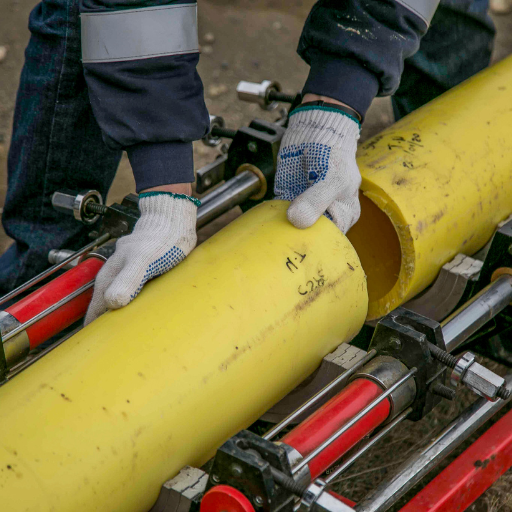
- Austenitic Stainless Steel
Among the most widely used stainless steels owing to corrosion and oxidation resistance, durability, and good weldability. Grade 304 and 316 are commonly used.
- Ferritic Stainless Steel
Has superior resistance to stress corrosion cracking and good thermal conductivity. 409 and 430 are common grades.
- Duplex Stainless Steel
Contains both austenitic and ferritic stainless steel, providing high strength and resistance to corrosion. Used commonly in 2205 and 2507 grade.
- Martensitic Stainless Steel
Hard and strong, making it useful for applications that require resistance to abrasion. Typical 410 and 420 grade.
Common types of stainless steel in pipes
- Austenitic Stainless Steel
Pipes are made from materials with the best corrosion resistance, ductility, and heat resistance, making austenitic stainless steel the most used type. These steels are basically made of iron, chromium, and nickel, with grades 304 and 316 being well-known. Grade 304 is general-purpose and has some corrosion-resisting properties, whereas grade 316 has molybdenum in it, which increases its resistance to chemicals. Chemical processing, food and beverage, and pharmaceutical industries make use of these materials.
- Ferritic Stainless Steel
Ferritic stainless steel, which is chromium-based and doesn’t have much nickel, is more economical and is used in medium corrosive environments because it has good polishability and resistance to corrosion. Common grade 409 is used frequently in car exhausts, while grade 430 is found in household appliances and decorative objects
- Duplex Stainless Steel
Duplex stainless steel has an austenitic and ferritic microstructure, which provides remarkable strength and corrosion resistance. Grades like 2205 and 2507 are particularly useful in highly corrosive environments like the marine and chemical industries that contain high amounts of chloride. Duplex pipes are preferred for their increased durability and strength that enable the pipes to perform under higher pressure. Over time, use of duplex pipes reduces material costs due to durability.
- Martensitic Stainless Steel
Cutting tools, valve parts, and other components exposed to high abrasion are manufactured using martensitic stainless steel due to its high strength and wear resistance. Grades 410 and 420, which have relatively high amounts of chromium and carbon, are blunt\n at room temperature and establish tools of a lower edge angle easily. This stainless steel variety is used extensively in engineering due to its high mechanical strength, although it is less oxidatively corrosive compared to austenitic varieties.
- Precipitation-Hardening Stainless Steel
With the help of precipitation hardening, a heat treatment process, this type achieves extreme strength alongside corrosion resistance. Their constant structural profile while subjected to harsh conditions makes them eminent in aerospace, chemical plants, and high-performance equipment. Components that are lightweight yet strong are best served with precipitation-hardening grades.
The diverse grades of stainless steel used in piping illustrate adaptability throughout different industries, fulfilling specific mechanical requirements, environmental factors, and financial constraints.
The role of alloy in enhancing corrosion resistance
Alloys enhance the corrosion resistance of stainless steel by selectively adding other elements to strengthen its protective layer. One of the main constituents, chromium, reacts with oxygen to form a passive layer, which is a thin oxide coating with a metallic surface. As long as the passive layer exists, the metal will be protected against oxidation and surface deterioration. The addition of nickel improves the resistance of the alloy to aggressive environments such as acidic and high-temperature conditions due to its improved ductility and stability.
A stainless steel grade containing at least 10.5% Cr will typically demonstrate rust and pitting resistance. Molybdenum is another alloying element, as it further increases resistance to chlorides and localized corrosion. This has made Molybdenum critical in marine and chemical uses. Research has shown alloys containing 2-3% Mo have significantly greater performance when exposed to salty environments. Likewise, nitrogen is added as an element to aid in increasing pitting resistance and general mechanical strength among duplex and austenitic stainless steel grades.
Manufacturers can produce alloys intended for particular industrial application with controlled compositions of these elements. These alloys enable strength, durability, and fatigue life while minimizing maintenance costs in aggressive working conditions.
Properties that affect seamless stainless steel pipe performance
- Corrosion Resistance
Because of their high corrosion resistance, seamless stainless steel pipes are ideally suited for the most hostile environments, including those with acids and chlorides, and extreme temperatures. The chromium present in them forms a passive oxide layer that prevents corrosion and rusting. In the oil and gas and chemical processing industries, high-grade stainless steel such as 316L is heavily used for its considerable resistance to pitting and crevice corrosion.
- Strength and Durability
Seamless stainless steel pipes possess remarkable mechanical strength, which is critical for high pressure and heavy weight applications. Duplex Stainless Steel has remarkable tensile strength and impact resistance because of it’s austenite-ferrite dual-phase microstructure. These properties are required in structural engineering and oil drilling where dependable performance under extreme conditions is essential.
- Temperature Resistance
Seamless stainless steel pipes can operate under extreme temperatures while sustaining their structural integrity. High temperature grades such as 310S are used in furnaces and heat exchangers because they can maintain strength under high temperatures and resist scaling. Low temperature grades, such as 304L, excel in cryogenic environments.
- Weldability and Formability
Another equally important practical characteristic is the ease of formability and weldability of the stainless steel pipes. For instance, 304 and 316 grade austenitic stainless steel pipes have very good weldability and can be fabricated with great precision. These industries, like food processing or pharmaceuticals, rely on these features for custom-made designs and flawless surface finishes.
- Dimensional Precision
Because seamless pipes have no welds or joints, they have better dimensional accuracy and smoother internal surfaces. This accuracy helps in the transport of fluids through pipes that need a constant diameter to minimize blockages to increase efficiency. Advanced manufacturiing techniques also provide pipes with wall thickness that uniform in variability minimizing service life and reliability problems.
- Environmental Impact and Sustainability
Modern industries have an increasing focus on sustainability, seamlessly, looking stainless steel which is 100% recyclable. Industries increase sustainability with seamless stainless steel pipes by reducing material waste and minimizing environmental impact.
Such qualities guarantee that seamless stainless steel pipes will continue to be the material of choice for a variety of industrial uses, giving due regard to functional requirements, life cycle, and operating economy.
Reference
- American Piping Products – Seamless Stainless Steel Pipe
- SUN STEEL – High-Quality Stainless Steel Seamless Pipe
- HandyTube – Four Things To Know About Seamless Stainless Steel Tubing
Frequently Asked Questions (FAQs)
Q: What is a seamless stainless steel pipe?
A: A seamless stainless steel pipe is a type of pipe made without a welded seam. It is created through the process of cold rolling or hot rolling, using raw material such as solid round steel billets. This manufacturing method results in a pipe type that has superior strength and resistance to pressure compared to welded tubing.
Q: How does seamless stainless steel pipe differ from welded steel pipe?
A: Seamless stainless steel pipe is manufactured without any welded seams, which enhances its ability to withstand pressure and corrosion. In contrast, welded steel pipe is made by forming a flat piece of steel into a tube and welding the seams together. Due to the lack of seams, seamless pipes generally have better mechanical properties and are suitable for high-pressure applications.
Q: What are the advantages of using seamless stainless steel pipes?
A: Seamless stainless steel pipes offer several advantages, including higher pressure ratings, uniform strength around the entire circumference of the pipe, and better corrosion resistance. They are often preferred in applications where pipe integrity and performance are critical, such as in parts and engineering structures.
Q: What are the common applications of stainless steel seamless pipes?
A: Applications of stainless steel seamless pipes include oil and gas transportation, chemical processing, power generation, automotive components, and construction. Due to their excellent properties of stainless steel, they are widely used in industries requiring high durability and corrosion resistance.
Q: What types of stainless steel seamless pipes are available?
A: There are various types of stainless steel seamless pipes, including 304 stainless steel seamless pipe and other grades like 316 and 321. Each type varies in terms of its chemical composition and mechanical properties, making them suitable for different applications and conditions.
Q: What is the role of pipe fittings in stainless steel piping systems?
A: Pipe fittings are crucial components used to connect, branch, terminate, or change the direction of pipes in a piping system. In the context of seamless stainless steel piping, fittings such as elbows, tees, and couplings help ensure a secure and efficient flow of fluids.
Q: How is a seamless stainless steel pipe manufactured?
A: Seamless stainless steel pipe is made through processes like extrusion, where a solid round steel billet is forced through a die to form a hollow tube. This can be followed by cold rolling or hot rolling to achieve the desired pipe dimensions and properties. Unlike welded pipes, no welding is involved in creating the pipe.
Q: What are the key properties of stainless steel pipes?
A: Stainless steel pipes are known for their excellent corrosion resistance, high strength, and durability. They also offer good thermal and electrical conductivity, making them suitable for a wide range of industrial and domestic applications.
Q: What distinguishes ERW pipes from seamless pipes?
A: ERW (Electric Resistance Welded) pipes are manufactured by welding the seam of a flat steel strip to form a pipe. While they are cost-effective and suitable for low to medium pressure applications, seamless pipes, being made without any welded joints, offer superior strength and pressure resistance.

